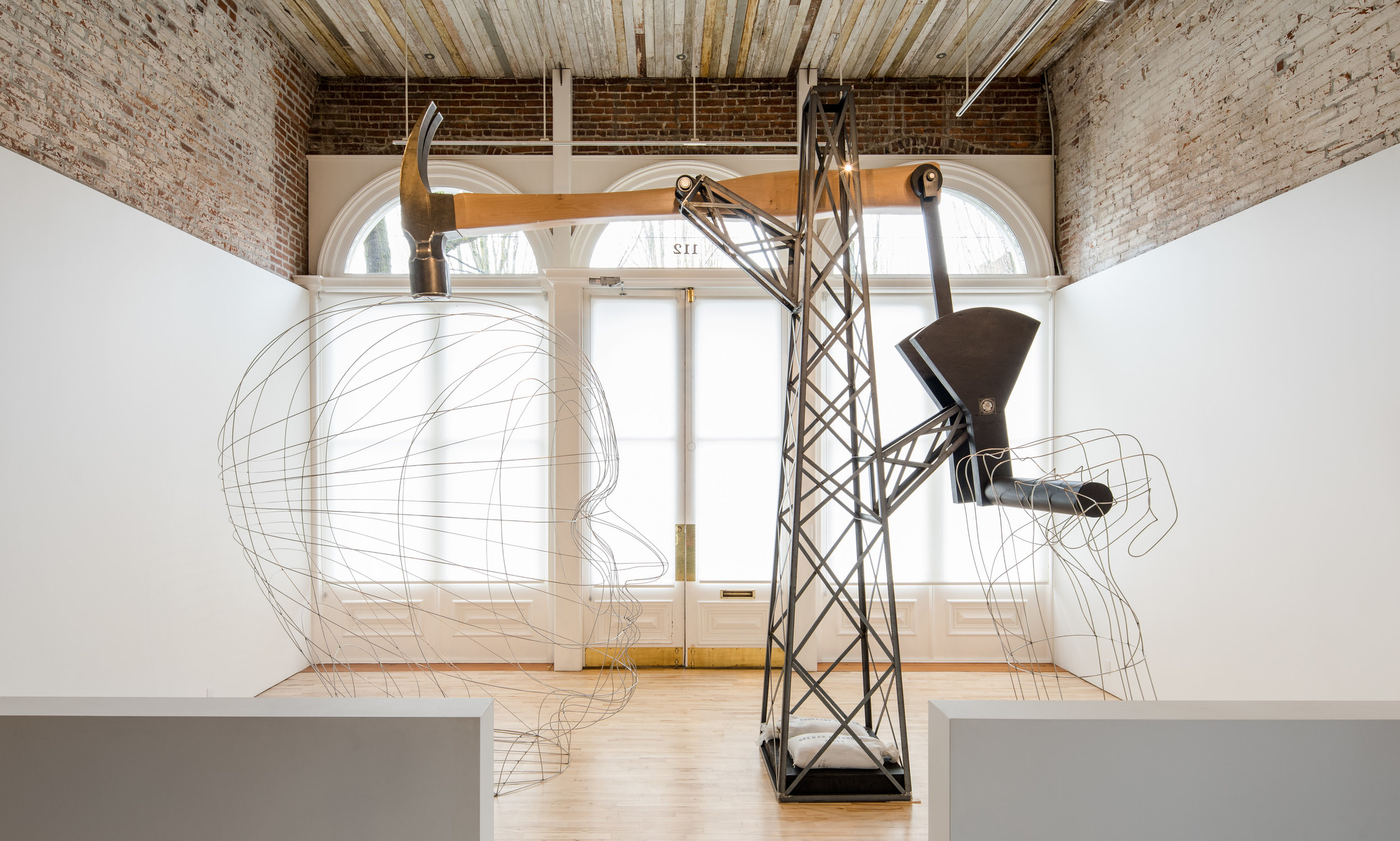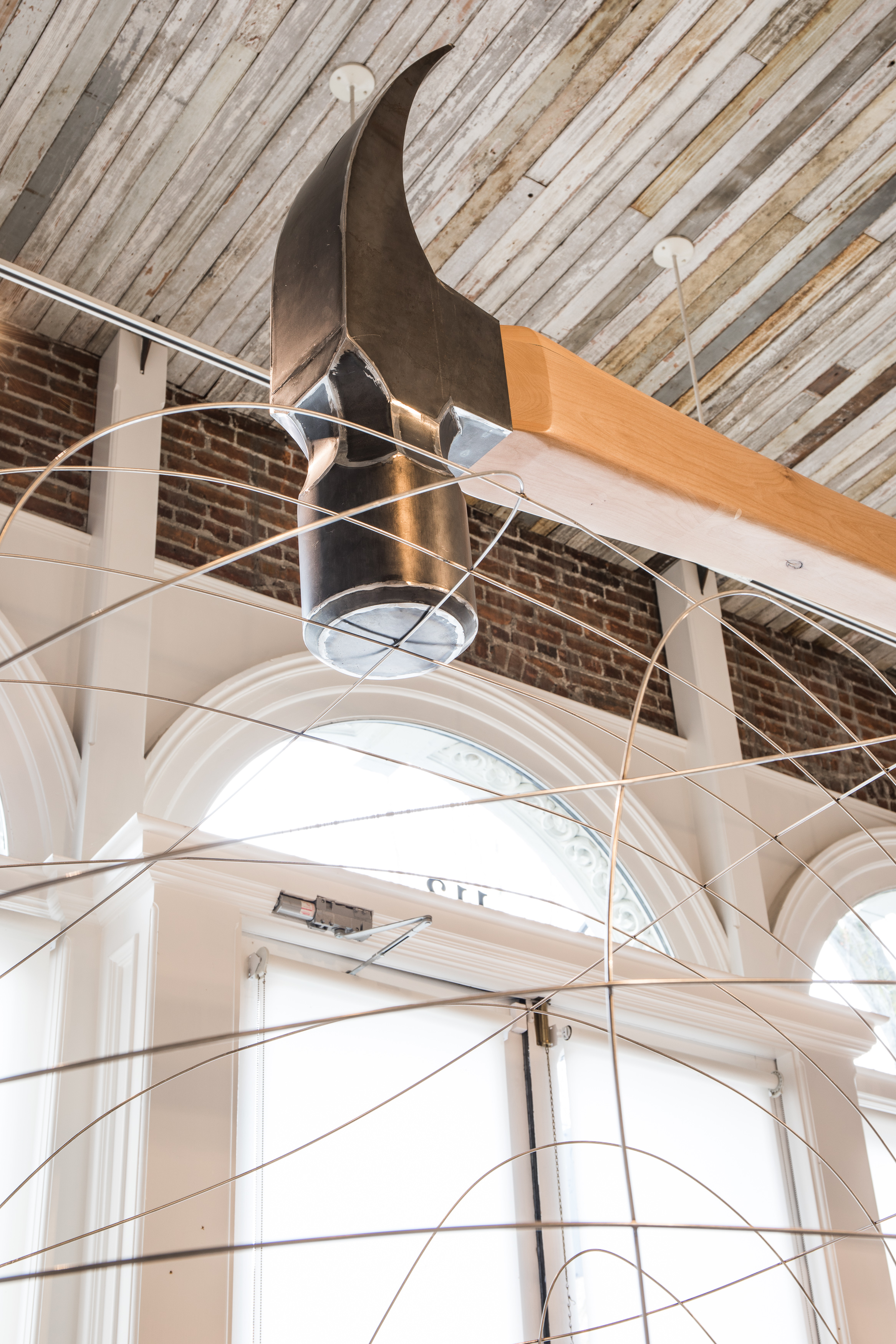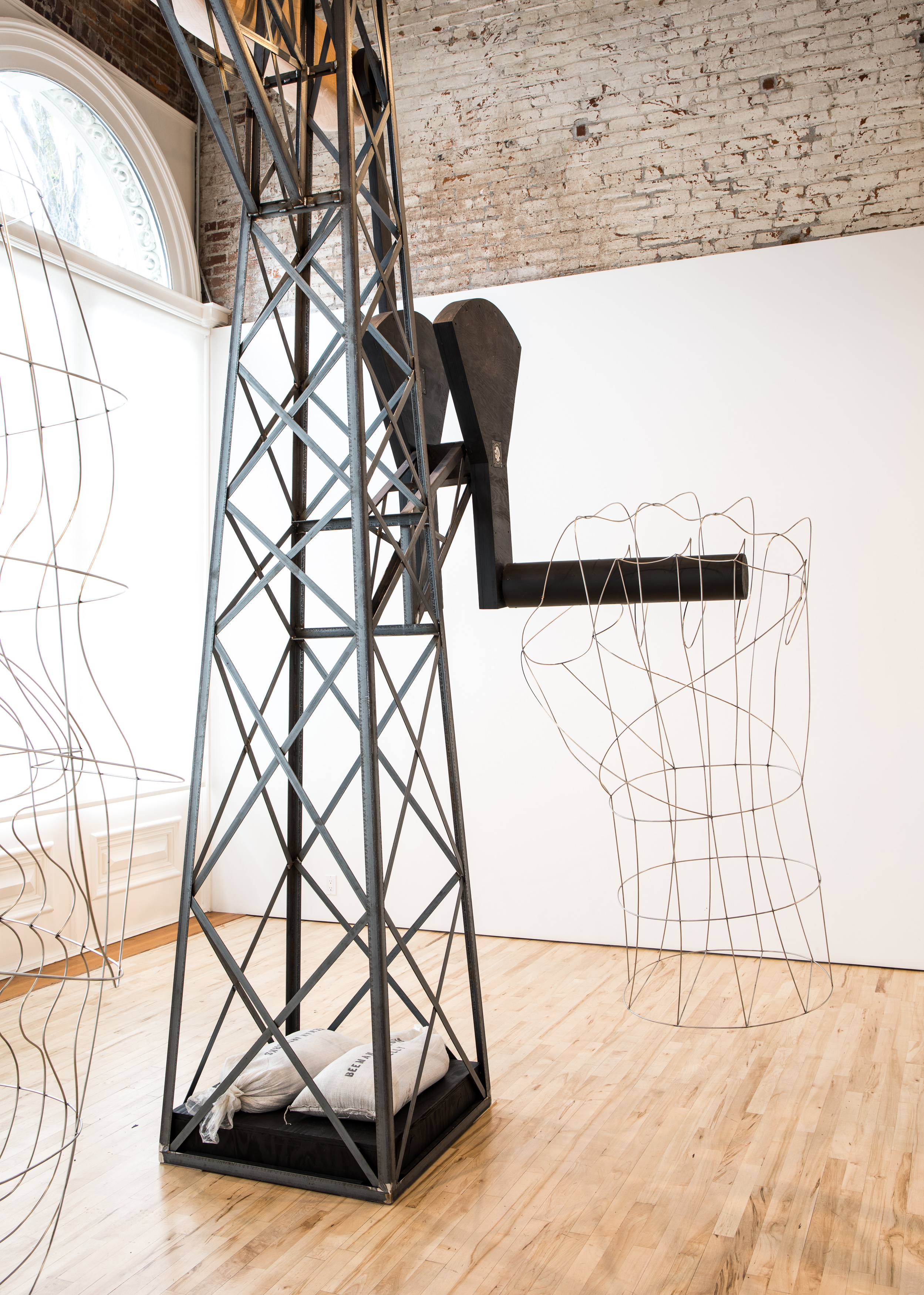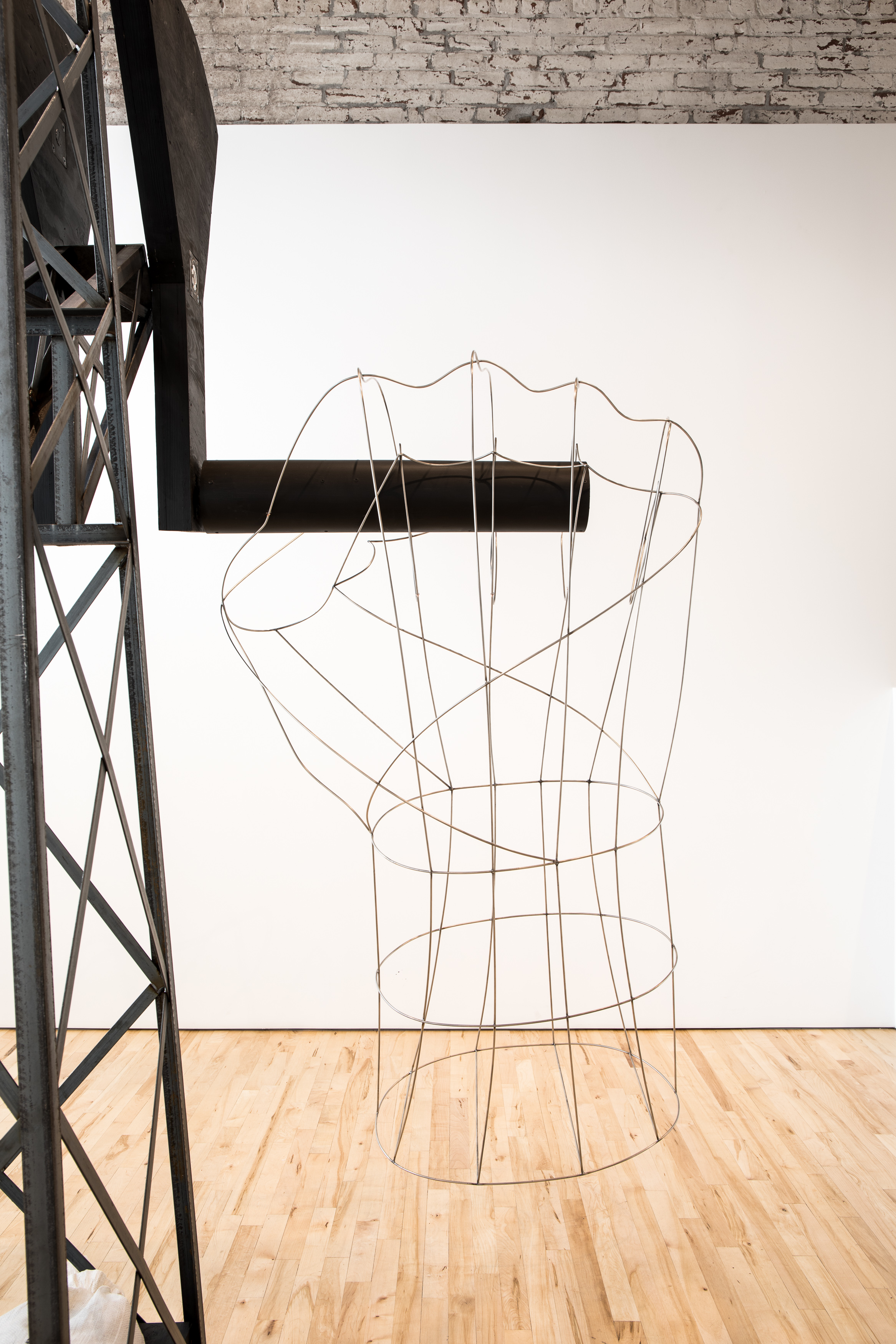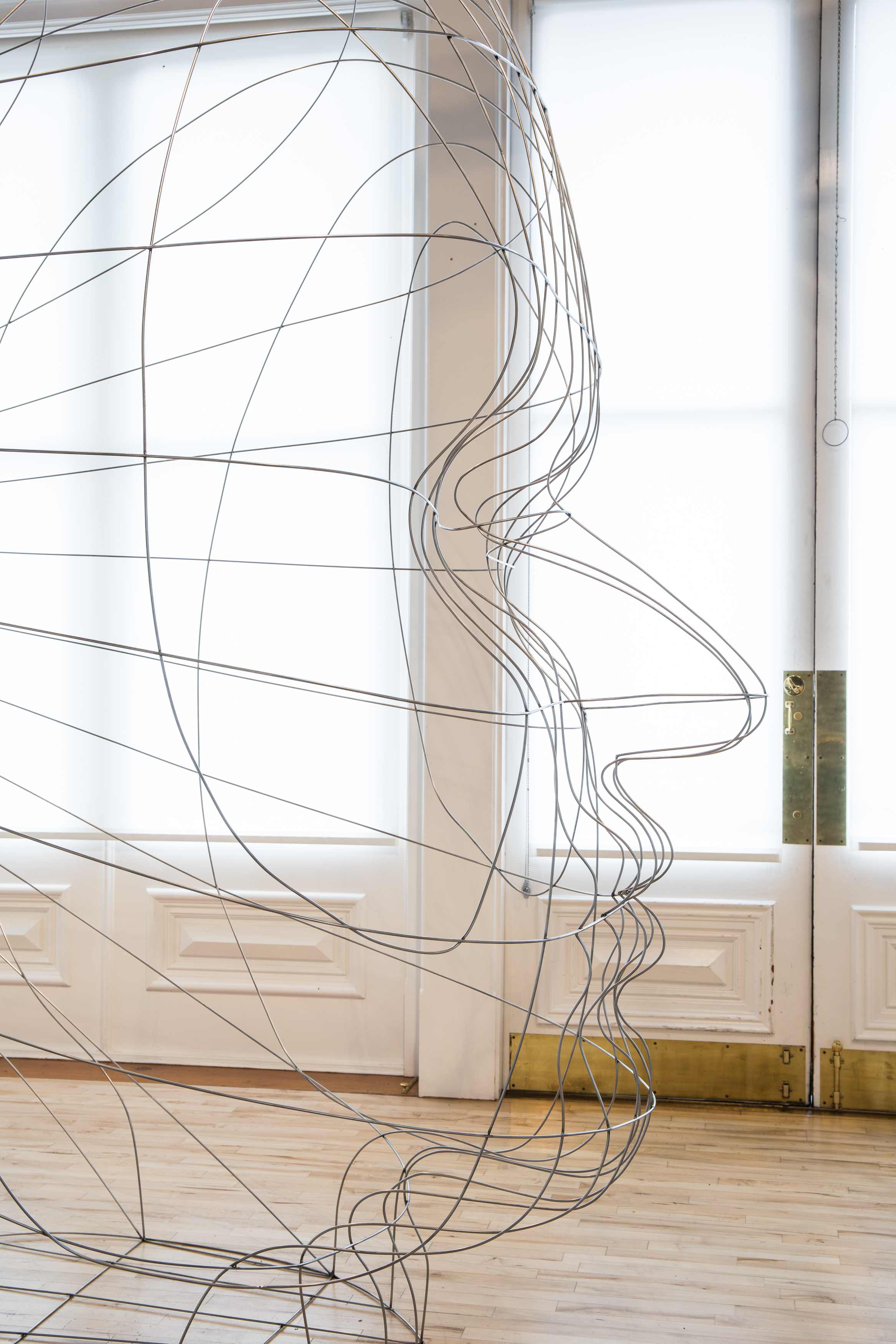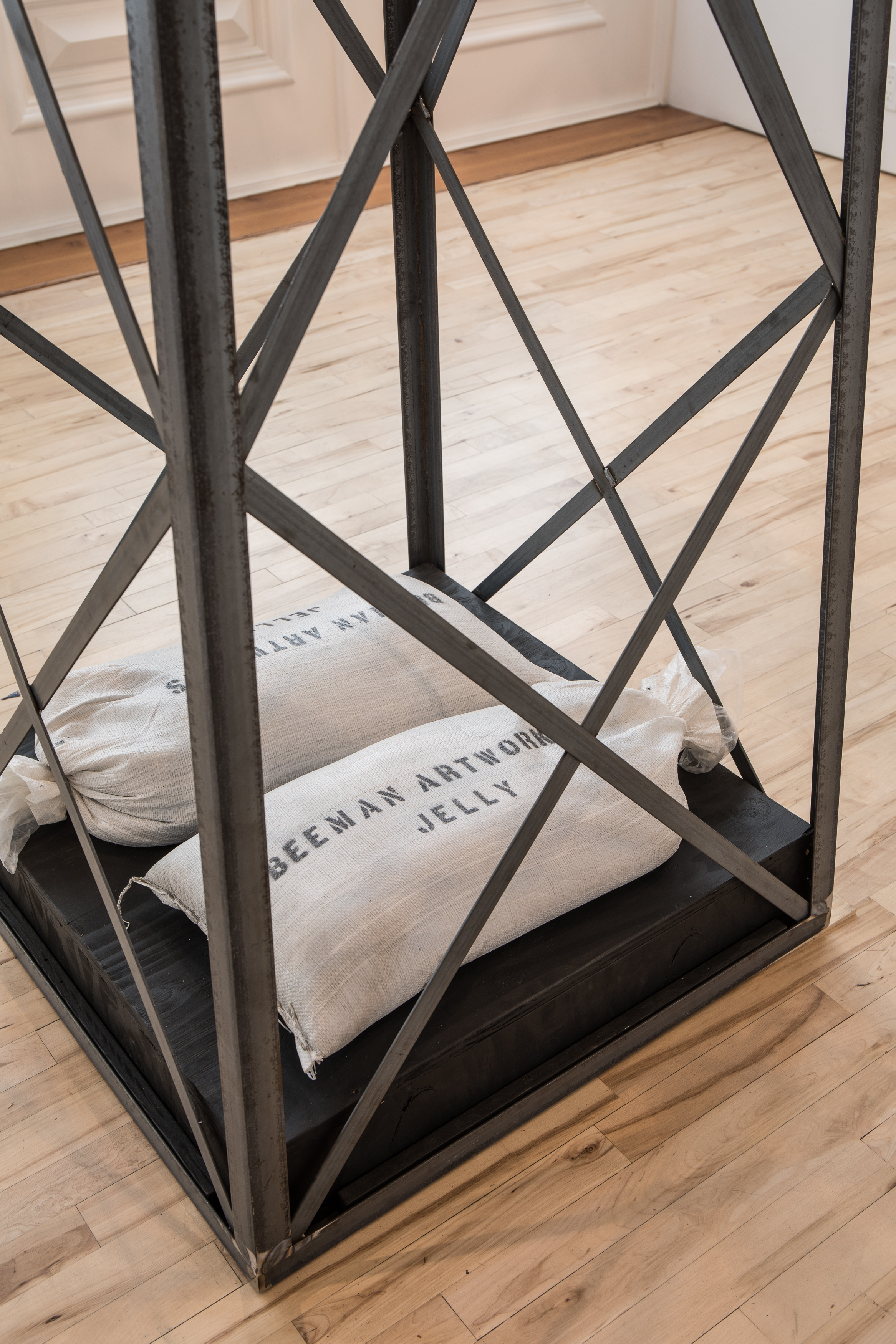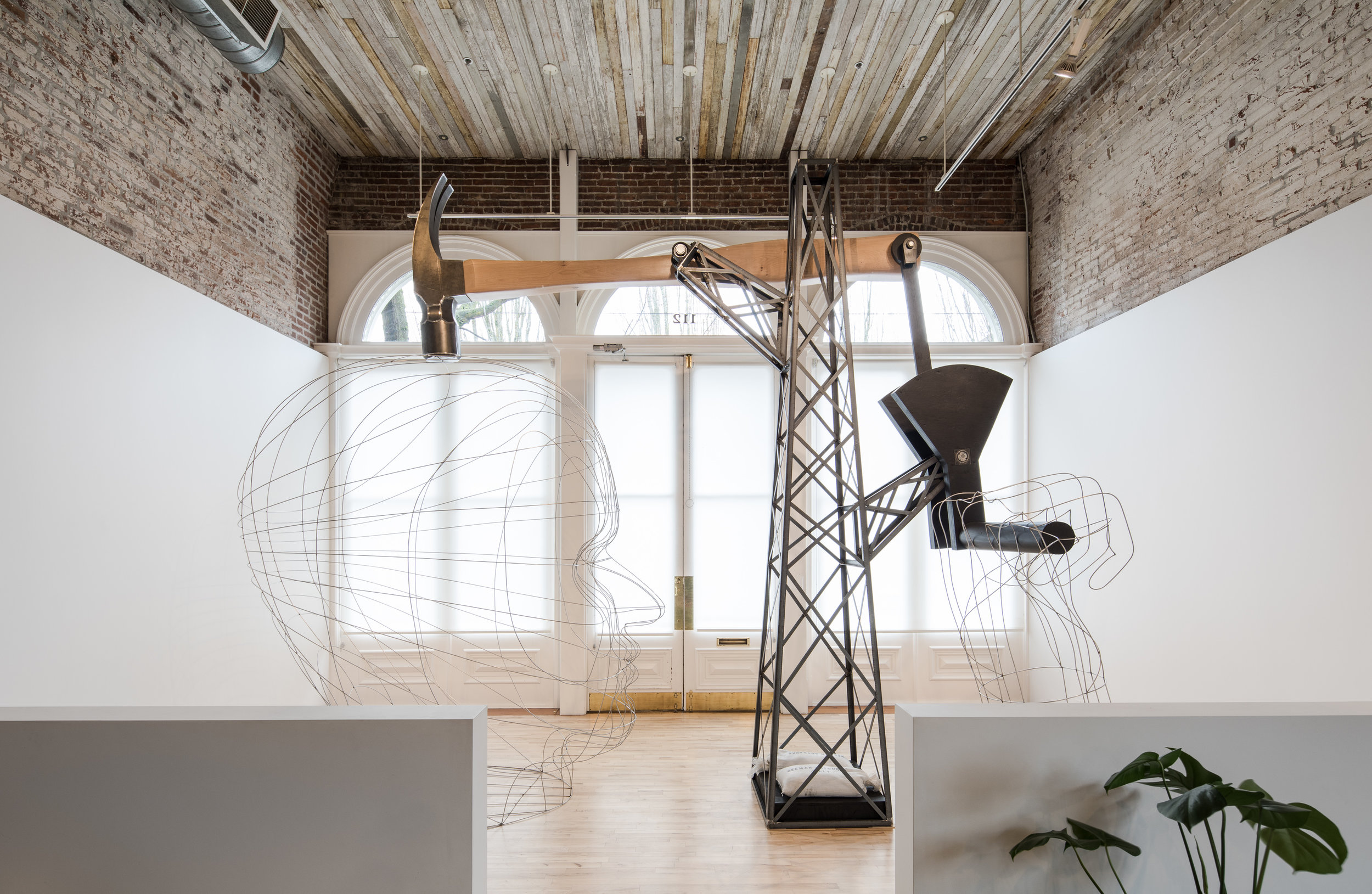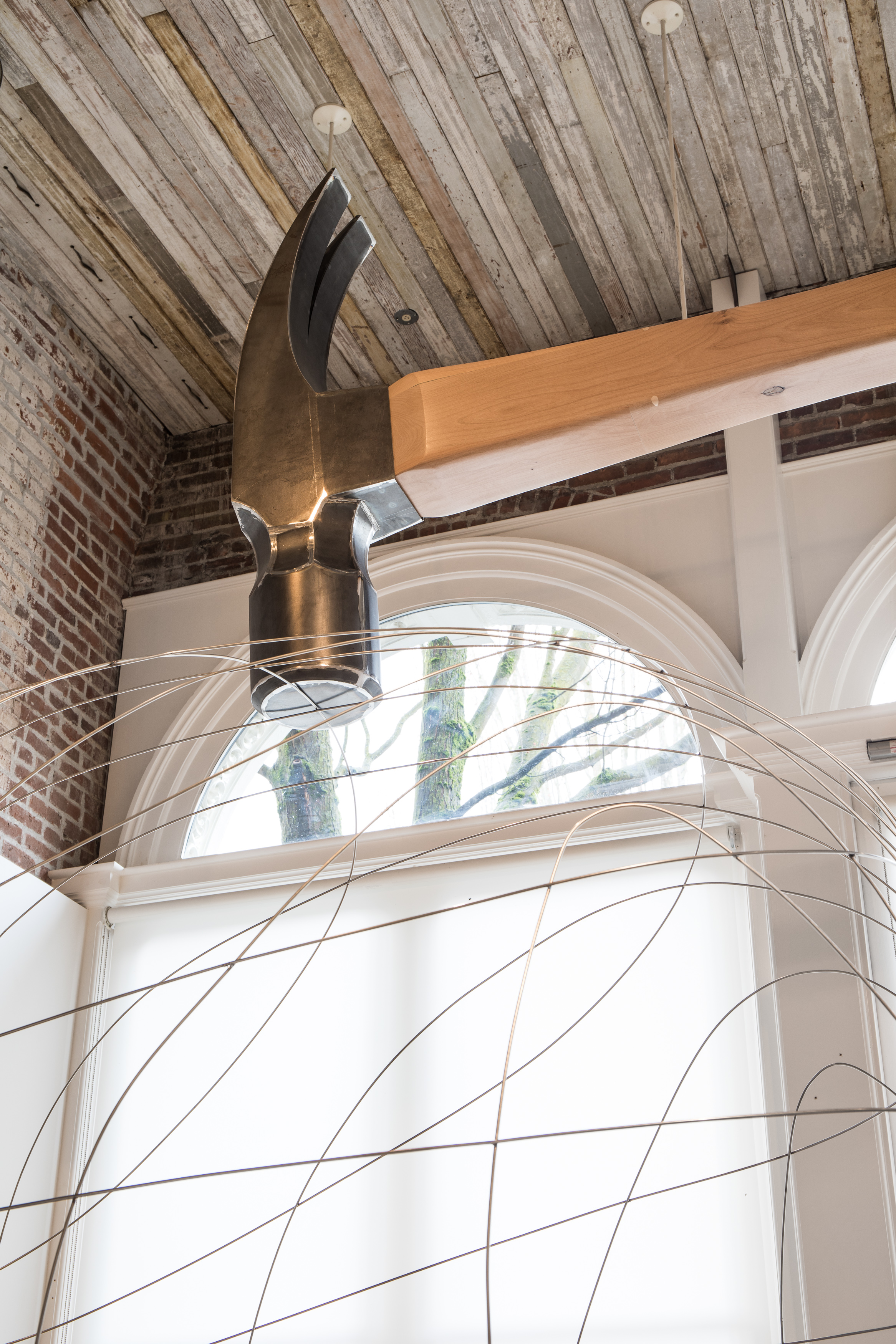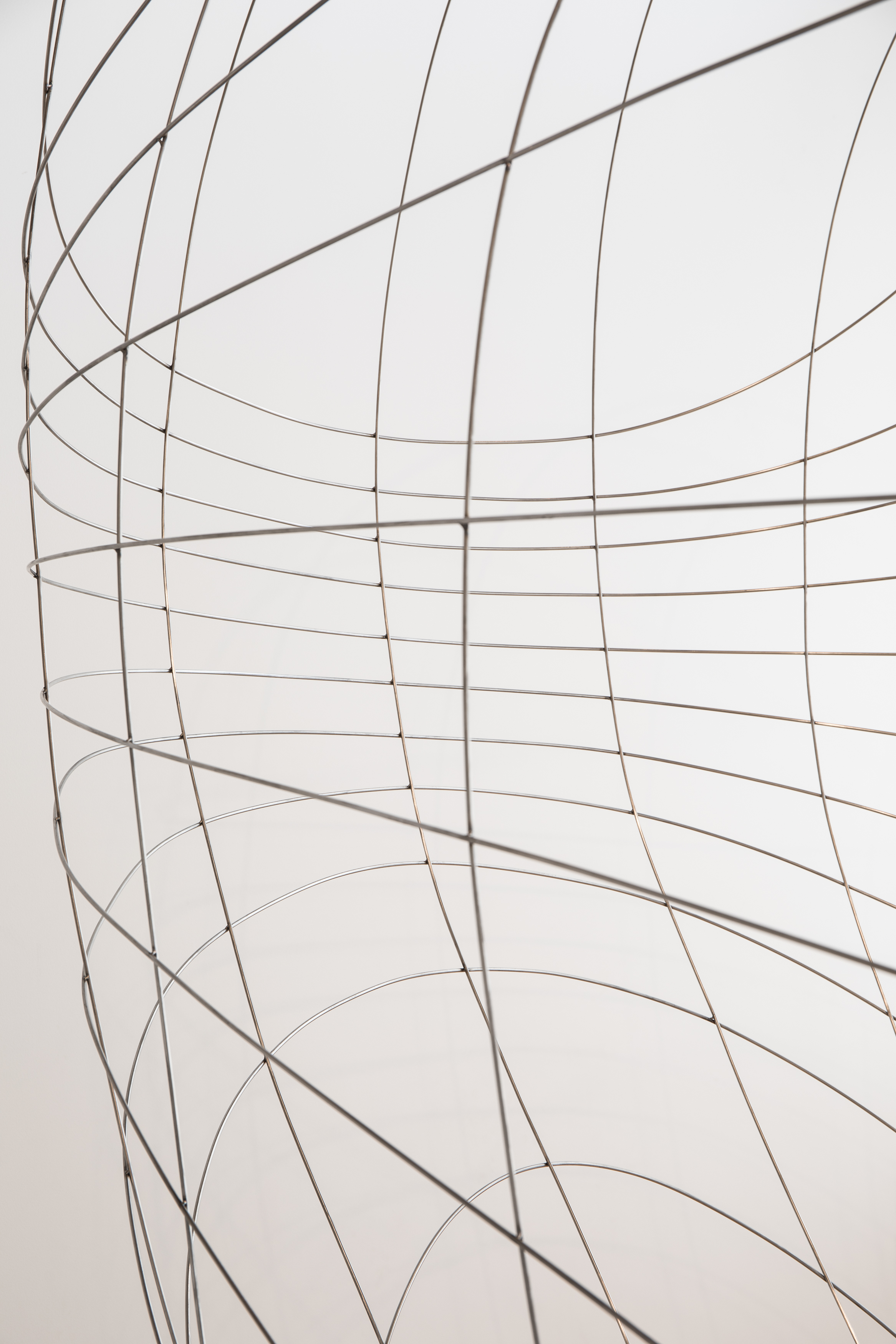PETE BEEMAN
JELLY
PREFACE
Jessica Helgerson
Jelly is the third installation at Front of House Gallery, and continues our focus on single works designed specifically for this space. Pete Beeman is an old family friend as well as an artist I've admired deeply for years. His career has been focused on large, kinetic art in public spaces throughout the Northwest, across the United States and Taiwan. He has a Master of Science in Design from Stanford University, a degree co-sponsored by the Art & Mechanical Engineering Departments, as well as dual Engineering and Arts Bachelors Degrees from Brown University.
Making interactive art in the public realm carries with it all the weight of harsh weather, strict budgets, code requirements, safety, durability, and decisions by committee. Pete has become adept at negotiating all these constraints while still maintaining a sense of play in his work, and has built his Portland studio into a training ground for young fabricators. I love this public work. but have always held a special place in my heart for his early studio and student work. I find there to be a tenderness in these pieces, where his testing of a material's limits and his exploration of still unmastered technology lent an affecting awkwardness to the results.
The chance for Pete to do something for the Front of House space was a way to recapture the feeling of play and experimentation of his early work. It doesn't need to withstand the elements, doesn't need to last forever, and doesn't really have a client. It just needs to feel right for him in this time and place. I think Jelly encapsulates all of the rawness and visual play of Pete’s early work with a mature and fluent use of the materials he’s selected. There’s something free and sketch-like about the wire framework of the head and hand, while obviously being totally in control. There is a sly symbolism in the forms used that feels both deadpan functional and very topical. Finally, the title is another bit of playfulness, one that only becomes clear when interacting with the piece.
ARTIST BIOGRAPHY
A Portland native, Pete Beeman builds sculpture in Portland, Oregon and New York City. Educated at Brown and Stanford Universities in art, engineering, and design, his work is often kinetic and interactive, industrial and playful. He builds useless but functional objects, and thinks a lot about how our culture rates the utility and necessity of an object.
Much of Beeman’s work is permanent public art. He is big in Oregon, Taiwan, and North Carolina, but has done work elsewhere too.
ACKNOWLEDGMENTS
I want to thank/credit my crew: Tanner Smith, Andy Bixler, Lindsay Kranz, and Diana Nelson who were essential for figuring this one out, and a heck of a lot of fun to work with, Jessica Helgerson for believing and for asking me to do this project, and my wife Page Fortna, for bringing the dynamite, every day.
ARTIST STATEMENT
With sculpture I attempt to communicate only well enough to inspire a related response, without dictating the experience. I am not declaring universal truths; I am exploring the world from my perspective, and putting forth fragments and speculations.
In commercial products functionality is crucial, but it is the ability to engage completely that transforms a functional object into a powerful, successful one. Similarly, only when a viewer is engaged can art become communication. I am trying to engage the viewer enough to perform the function of the object at hand, as in any commercial product. However my product is typically counter-productive. Its function is extravagant and useless, more often a play on utility than it is utile. As individuals and as a society we concern ourselves with what we are capable of doing, rather than what would be good for us to do. I build useless objects with efficient functionality, because I doubt our cultural definitions of utility, progress, and functionality. To do so effectively, the “function” must be clear and logical in the structure. The object must follow the simplicity and rationality of an engineering design, in its structure, crafting, and materials.
I love to make interactive work, because it forces viewers to engage one level, and, when successful, rewards them for the effort.
The work is a little invasive, industrial, and physical to the point of being visceral. The machine aesthetics and aggressive characteristics of the materials and scale are countered with motion. With motion, the objects take on personalities. One minute they are elegant and graceful, the next spastic, clumsy and awkward. Their presence momentarily transforms the machine into a living thing. A sliver of anthropomorphism shines through. The aggressive physicality of material and scale is mediated with grace and awkwardness introduced by motion, transforming the hard, cold, intimidating object into one of beauty, fascination, and humor.

